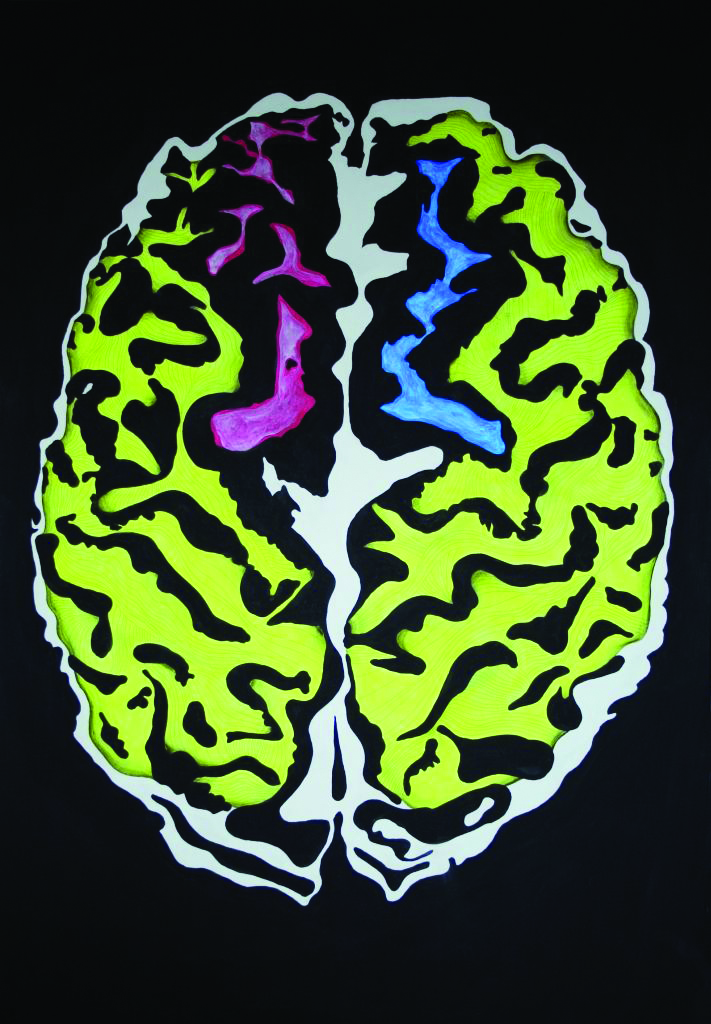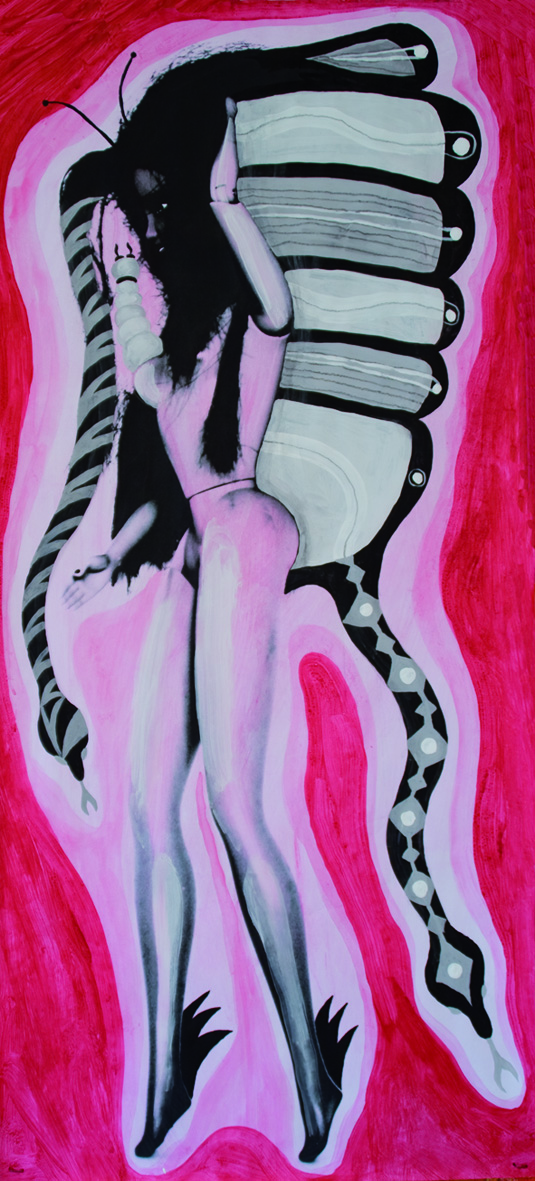By Jill Smith
Martina Reinhart’s work has focused on continually denaturalizing the human body. Her work has followed a steady progression from conceptualizing the stages of human life in man, woman, and child – to creating a series of chimeras – figures who are partly human and partly anthropomorphized, their body parts completely re-organized. Reinhart has taken this exploration even farther in her series, “Dream-Creatures,” rendering composite figures made up of both natural elements and aspects traditionally considered artificial. By elegantly combining these aspects of materialism, naturalism, and fantasy, Reinhart pushes against commonly-held understandings of what it is to be embodied.
The use of composite figures in visual art, particularly ones that incorporate anthropomorphized or fantastical elements, pre-dates Greco-Roman society and continues to be reinterpreted as a way of understanding the disparate aspects of human consciousness. The figure of the chimera itself has reoccurred and reinvented itself in art throughout centuries, firstly as a simple decorative figure with the body of a lion, the tail of a serpent, and a goat’s head springing from its back. It was reinterpreted in the Middle Ages as a representation of the dubious, shape-shifting, untrustworthy nature of Woman. During the Renaissance, a rediscovery of composite figures like the Sphinx and the Chimera occurred, and were occasionally represented in highly stylized, romantic forms; the brutality and violence of the monsters found no place in Renaissance conventions.

Reinhart’s work picks up on this tradition with a new understanding, drawing from deep well-springs of symbology as well as figures from our consumer culture. “Dream-Creature 30” begins with the Barbie doll, its willowy legs and slender waist completely unrealistic but also omnipresent. The traditional Barbie doll’s feet are styled upwards in order to fit into high heels, to the chagrin of feminists and health experts everywhere; Reinhart’s creature has extra support under her lilting heels, with pointed flame-like cuffs splaying from them. The figure’s butterfly-like wings and antennae give it the feeling of flight, but it is grounded by two heavy serpents diving for the ground. The color palette combines a simple grey-scale with a bubble-gum pink that is ubiquitous in Barbie marketing schemes and products.It is therefore fitting that Reinhart’s work combines graphite drawing, acrylic painting, and print. This mixed-media form perfectly compliments the composite content of her works, giving them another dimension beyond the recognizable figures. Composite figures have long been lodged with what we seek to understand or what eludes us about our human condition, and Reinhart’s style invites us to ask these questions of our modern society. Her work asks us to plunge into our unconscious and elucidate our societal id in an effort to understand our own desires and motivations.Other works by Reinhart like Brain Inverted and Knowledge, references the invisible inner workings of the mind. Here, sections of the brain are designated particular colors, indicating a plethora of associations from synapses firing to the birth of thought. These works take the structures of the brain and its physical and emotional manifestations as their subject. They deal too with written culture as a powerful vessel for knowledge. Covering a broad range of subjects, Martina Reinhart posits herself as an artist whose masterful intellect coalesces with her unique techniques to form a significant body of work.
I recently had the chance to interview Martina to find out more about her work:
Jill Smith: Your works have a mixed media style to them, using drawing, prints and painting all at once. How did you arrive at working this way?
Martina Reinhart: I come from a background in painting and I used it to create abstract works, while studying at the Academy of Fine Arts in Vienna. Then I had a scholarship in Barcelona, where I learned how to use screen-printing. I have always been inspired by life and feel called to themes of beauty and transience. I then started to examine the ‘image of woman’, the ideals of beauty and what impact society has on the perception of different types of women. With this purpose in mind, I began combining photographs, screen-printing and painting with one another to create my compositions.
JS: Some of your work feels somewhat cryptic, is there a hidden message you want the viewer to receive?
MR: The message is always dependent on the series, the theme and content I’m working with.
JS: What future projects do you have in mind for your work?
MR: Most recently, with my series ‘Knowledge And Its Structures’ I have been exploring structures and manifestations of the brain. Since then, I have been working to examine how the written word transfers knowledge in light of new media, the internet, and cyber communication. I have also made a contemporary reinterpretation of Descartes; thesis “cogito ergo sum.”

My upcoming cycle will center on ‘Cities Of Knowledge/Sites Of Knowledge’ and is the continuation of this subject. Our digital knowledge-society is mainly concerned with acquiring competencies. Over the past decade, some cities distinguish themselves as ‘Cities Of Knowledge’, which emerge from knowledge-communities and organizations, such as universities, schools and libraries. Yet this is also the case with the computer. The Internet and social networks create such cities and sites – yet without a physical experience in the body or in nature. I want to raise questions of the body and nature existing as places (sites), which save knowledge with experience.

























